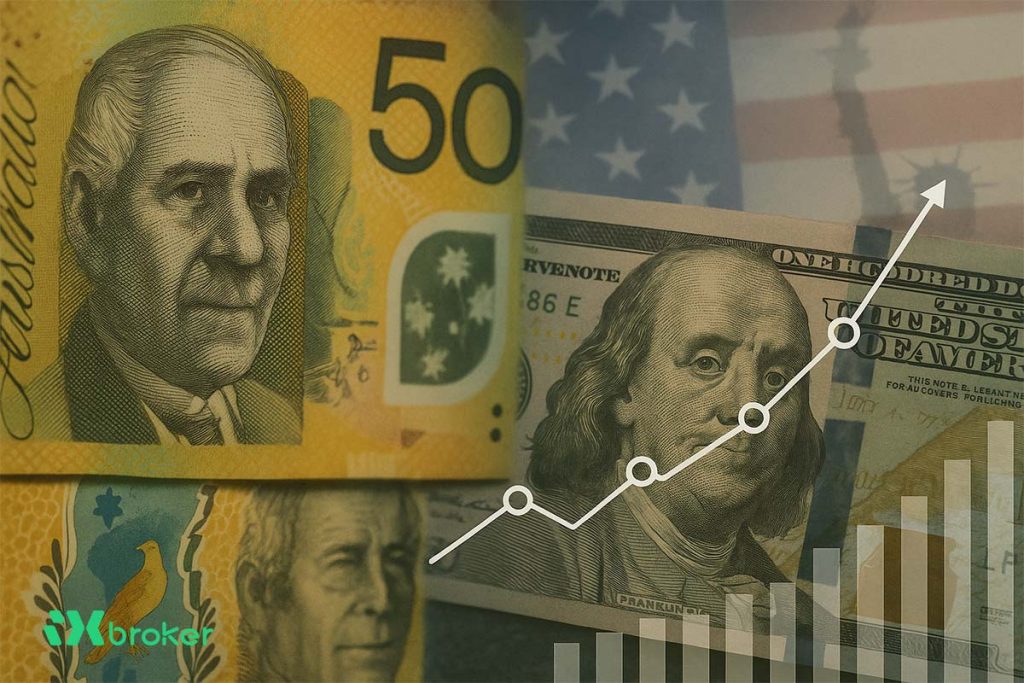The Australian Dollar (AUD) slipped against the US Dollar (USD) on Thursday, trading near 0.6490, as investors turned risk-averse ahead of key US inflation data due on Friday. The cautious sentiment was amplified by an ongoing US data blackout, caused by the prolonged government shutdown, which has delayed several key economic indicators, including Nonfarm Payrolls (NFP).
Despite the downside pressure, the AUD found brief support after US President Donald Trump signaled optimism over an upcoming meeting with China’s President Xi Jinping in South Korea, expressing confidence that “something will work out.” Given Australia’s close trade ties with China, any improvement in Chinese economic prospects often translates into support for the local currency.
RBA rate cut bets rise amid soft labor data
The AUD/USD pair continues to face headwinds as markets price in higher odds of a near-term Reserve Bank of Australia (RBA) rate cut. Australia’s latest employment report showed the jobless rate rising to its highest level in almost four years in September, surprising markets and triggering a shift in rate expectations.
Traders now assign roughly a 70% probability of a 25-basis-point (bps) cut at the next RBA meeting — up sharply from around 40% a week earlier. Market participants will closely monitor upcoming flash PMI readings and next week’s Q3 CPI data for further clues on the RBA’s monetary trajectory.
Trade partnership and commodity outlook offer some support
Improved sentiment over trade relations between Australia and the United States provided a mild cushion for the local currency. Earlier this week, President Trump and Australian Prime Minister Anthony Albanese signed an USD 8.5 billion critical minerals agreement at the White House, securing access to Australia’s rare-earth resources amid tightening Chinese export controls.
Both nations also pledged to invest at least USD 1 billion each over the next six months in mining and processing projects, reinforcing strategic economic cooperation.
US Dollar strengthens on Fed expectations and trade optimism
The US Dollar Index (DXY) climbed toward 99.00, buoyed by improved sentiment following Trump’s remarks about upcoming US-China negotiations. The talks, scheduled for next week, are expected to address US soybean exports, nuclear weapons limitations, and China’s purchases of Russian oil — developments that could influence market risk tone and USD positioning.
Meanwhile, the US government shutdown has entered its fourth week, marking the third-longest funding lapse in modern history, as political gridlock continues to stall fiscal progress.
Expectations of Federal Reserve rate cuts also remain strong. A Reuters poll revealed that 115 of 117 economists anticipate a 25 bps rate reduction at the October 29 policy meeting, lowering rates to 3.75%–4.00%. The CME FedWatch Tool similarly shows a 97% chance of a cut in October and a 96% probability of another in December.
In Asia, the People’s Bank of China (PBoC) held its Loan Prime Rates (LPRs) steady at 3.00% for one-year and 3.50% for five-year terms. China’s Q3 GDP grew 4.8% year-on-year, in line with expectations, while industrial production and retail sales both surprised slightly to the upside — indicators that may support regional growth sentiment in the medium term.
Technical outlook: AUD/USD eyes 0.6500 resistance amid bearish bias
The AUD/USD pair remains under bearish pressure on the daily chart, trading below the nine-day Exponential Moving Average (EMA) at 0.6504. The 14-day Relative Strength Index (RSI) holds below the neutral 50 level, reinforcing a downside bias.
- Immediate resistance: 0.6500 (psychological level), followed by 0.6541 (50-day EMA) and 0.6560 (upper boundary of descending channel).
- Key support: 0.6414 (four-month low) and 0.6400 (lower channel boundary). A sustained break below this zone could expose 0.6372, the lowest level in five months.
Unless the pair reclaims the 0.6500–0.6540 zone, the short-term outlook remains bearish, with sellers likely to dominate on any rally attempts.



